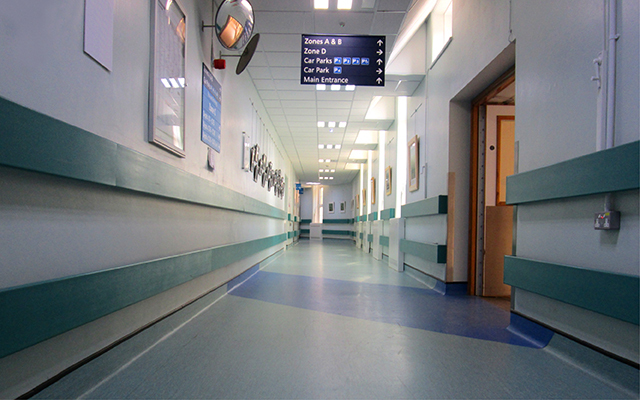Like most of my grade-school peers growing up in the 1950s, I developed an appreciation bordering on devotion for the scientific advances that brought us such miracles as the polio vaccine, Novocain, and Band-Aids. Especially Band-Aids. I had the sense that medical technology had everything covered, so to speak, and that a trip to a modern hospital would be both life-saving and pretty cool.
I very nearly got my wish after a nasty case of tonsillitis sent me to the doctor, who told Mom that the next time my tonsils flared up it would be time for surgery. I secretly hoped for a relapse — my tonsil-less pals raved about the bottomless bowls of ice cream in the recovery room — but my tonsils refused to cooperate. It wasn’t until nearly 30 years later that a stubborn collection of kidney stones allowed me to experience firsthand the mixed blessings of hospitalization. By then, any visions of modern medical magic had melted away like a forgotten scoop of Rocky Road.
I’m now of the age when hospital visits tend to become rather commonplace: About one in six seniors spent at least one night there during 2015, according to the Centers for Disease Control and Prevention. But changes in the healthcare system — and concerns about the level of care in hospitals — have been driving that number down since before my last stay in 1987. The trend is so profound, in fact, that some observers are suggesting that the modern hospital may be on its last legs.
Ezekiel Emanuel, MD, PhD, writing in the New York Times, notes that hospital visits peaked at more than 39 million back in 1981. The U.S. population has grown by 40 percent since then, yet hospitalizations have declined by 10 percent. There are now 20 percent fewer hospitals operating than there were 35 years ago.
This is partly due to the rise of specialty clinics that provide a wide range of procedures — everything from joint replacements to chemotherapy — that once required hospitalization. Even patients with serious heart conditions, infections, or pneumonia can now be treated at home by visiting nurses. But it may also have something to do with increasingly negative perceptions of the overall hospital experience. People could be opting for alternatives to in-patient treatment in the wake of mounting evidence that they may leave the hospital worse off than when they arrived.
“In a throwback to the 19th century, hospitals now seem less therapeutic and more life-threatening,” Emanuel explains, citing a 2002 CDC study reporting nearly 100,000 deaths due to hospital-acquired infections. “Other problems — from falls to medical errors — seem too frequent. It is clear that a hospital admission is not a rejuvenating stay at a spa, but a trial to be endured. And those beeping machines and middle-of-the-night interruptions are not conducive to recovery.”
Just ask Bernard Lown, MD. The 96-year-old emeritus professor of cardiology at Harvard tells Rich Joseph, MD, in another recent Times piece that a hospital is now more like a factory. “It tests every ache and treats every laboratory abnormality, but it does little to heal its patients.”
That may explain why so many geezers seek to flee the premises every year. A 2013 survey published in The Journal of the American Geriatrics Society reported more than 50,000 cases in which patients over 65 were discharged “against medical advice.” It’s a small portion of total hospitalizations (0.42 percent), to be sure, but it’s 11 percent higher than a decade earlier and reflects a growing skepticism surrounding the quality of hospital care — concerns corroborated by recent research.
A Harvard Medical School study published last year in JAMA Internal Medicine argued persuasively that spending more on hospital care doesn’t buy seniors better health. “If you spend more money on a car or a TV, you tend to get a nicer car or a better TV,” explains lead study author Anupam Jena, MD, PhD. “Our findings show that’s not the case when it comes to medical care.”
And for retirees, every dollar counts, which makes the gradual disappearance of hospitals — no matter what these prospective patients may think of their benefits and liabilities — a bit of a financial conundrum. With outpatient clinics rapidly absorbing patients with conditions that once required hospitalization (which Medicare Part A covers for no monthly premium), seniors increasingly will be forced to ante up for Part B supplemental coverage (at a monthly cost of $134) to pay for the procedures. That’s certainly a better deal than private insurance, but it’s still a chunk of change for anyone trying to get by on a puny Social Security check.
All of which makes me appreciate the value of gainful employment — and a decent insurance plan. The modern hospital long ago lost its allure; these days I stay as far away from Western medicine as possible. But you never know what’s going to happen. I just hope it’s not my tonsils. I’ve pretty much given up ice cream.



This Post Has 0 Comments